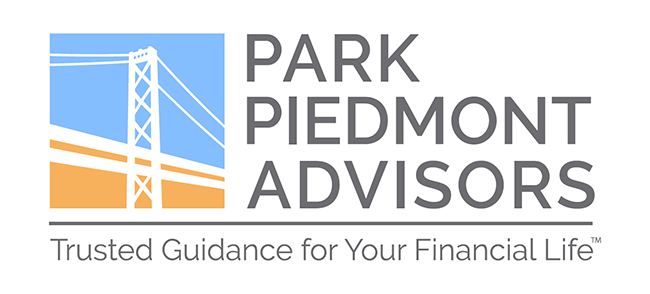This week’s Life with Money is our second installment on ESG investing.
Last time we discussed various definitions and reasons why people might opt to invest in this way. One key takeaway was that “sustainable investing” is a general umbrella term, whereas Environmental, Social, and Governance (ESG) investing uses data to measure the sustainability of a company (both financial and in terms of global impact).
Today we cover how to invest according to ESG (environmental/social/governance) principles.
Originally, sustainable investing focused on including or excluding companies from a portfolio depending on whether they aligned with the investor’s values and interests (think: nixing gun-related assets). The level of customization and detailed analysis required to screen and select companies often meant that sustainable investing funds had higher expenses than traditional funds, and much higher than index funds.
These higher fees, along with the loss of diversification from highlighting or eliminating certain sectors, meant that many of these funds had lower returns compared to their traditional equivalents. Adding insult to injury, “greenwashing” has been an issue, with companies and fund sponsors trying to make their investment funds and strategies appear more impactful and good for the planet than they actually are.
More recently, a few developments are changing the ESG investing landscape. A recent push to standardize how ESG data is measured and compared, including new SEC disclosure requirements for companies, helps address the current lack of universal standards and combat greenwashing. Without standardization, choosing how to sustainably invest is like comparing apples and oranges. How can investors tell if one measurement of ‘diversity’ or ‘clean energy’ is the same as the next?
Second, the increasing popularity of ESG investing has led to more fund options and ways to invest (including within many workplace retirement plans). New developments in regulations, machine learning, and big data have already begun to offer more cost-efficient, effective, and automated ways to apply ESG data to sustainable investment funds.

So how does ESG investing work? Here are a few options to consider:
Stocks vs bonds: Whether it’s mutual funds or exchange-traded funds (ETFs), the ESG investing space has long been dominated by stocks. According to the Forum for Sustainable & Responsible Investment (US SIF), about one in four dollars (that’s $12 of $46 trillion in 2018) of total US assets under management are invested using sustainable investment strategies, and (according to Morningstar) ESG bond funds account for less than one-fifth of total ESG fund assets.
Increasingly, there are more sustainable fixed income investment options, particularly as credit rating agencies incorporate more ESG data in their research and ratings to assess risk. As new infrastructure is needed to address global environmental and social issues, the sustainable bond market is expected to continue growing.
Passive vs active: Active sustainable investing involves picking stocks, sectors, or mutual funds that align with investor and/or fund goals. It can involve using ESG data to handpick investments that are predicted to do well or choosing to exercise active ownership through direct engagement (e.g. proxy voting) with companies on ESG topics.
By contrast, passive sustainable investment options often use quantitative ESG data to group investments into indexes that meet a particular sustainability goal and achieve investment results comparable to the segments of the stock market in which they choose to invest. Passive sustainable investing has increased in popularity over the years due to the cost and tax advantages that give them a built-in edge over active sustainable investments. During the last few years, net flows into passive ESG funds have outpaced those into active ones. (The US SIF reports that in 2019, net flows into passive ESG funds totaled $12.7 billion compared to $8.7 billion into active funds).
PPA uses a passive, indexed approach to managing investment portfolios overall, and this extends to helping interested clients invest according to ESG principles.
Broad vs narrow: ESG investing can be as broad as buying all of the stocks that meet certain ESG criteria within a certain area, such as the US stock market or international (both developed and developing country) markets.
Other sustainable funds tout a primary, or “sector,” focus, such as climate change or gender equity, which might appeal to clients with interests in a particular aspect of ESG. Examples of ESG sector funds include SPDR’s Gender Diversity Index (SHE), which seeks out companies that employ women in high-level leadership roles, and New Alternatives Fund (NALFX), an actively-managed fund that focuses on global alternative energy and the environment.
Whatever the scope, investors should look beyond a fund’s name or primary focus to learn about its approach and whether it aligns with their values.
There is a lot to take in when it comes to ESG investing, but here are some key takeaways:
- Start by reflecting on your issues: What are your motivations and priorities for sustainable investing? How do they align with your financial goals and needs?
- Be aware of how sustainable investing is measured, but recognize that the system is imperfect and there are trade-offs.
- Remember that, as a consumer, there are many other things you can do to live your values in a way that delivers a positive return beyond your portfolio. Perhaps that’s volunteering your time, pursuing philanthropic interests, or choosing to support certain causes through the businesses you frequent or the goods you buy.
Please feel free to reach out to your advisor if you have an interest in or questions about ESG investing.




 This was always evident during meetings with PPA clients, especially new ones, when Vic would gather important information about their financial situation as well as their interests and core values.
This was always evident during meetings with PPA clients, especially new ones, when Vic would gather important information about their financial situation as well as their interests and core values.




